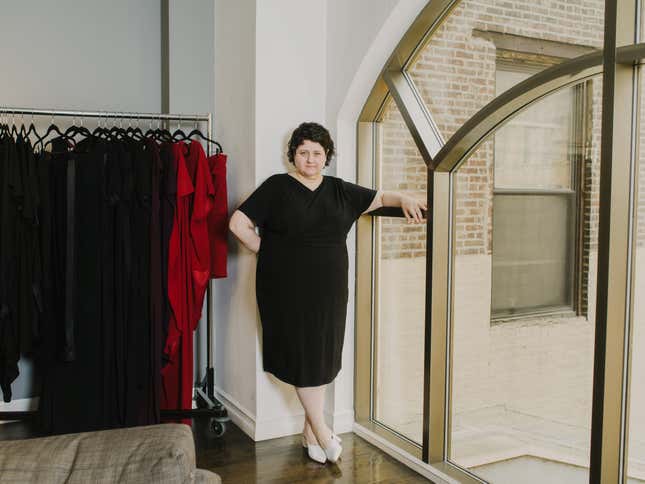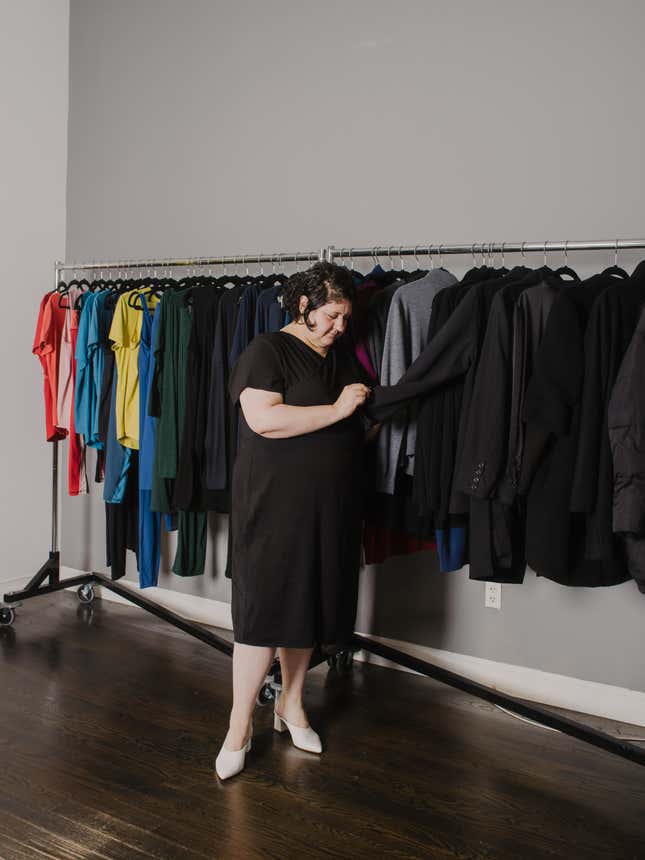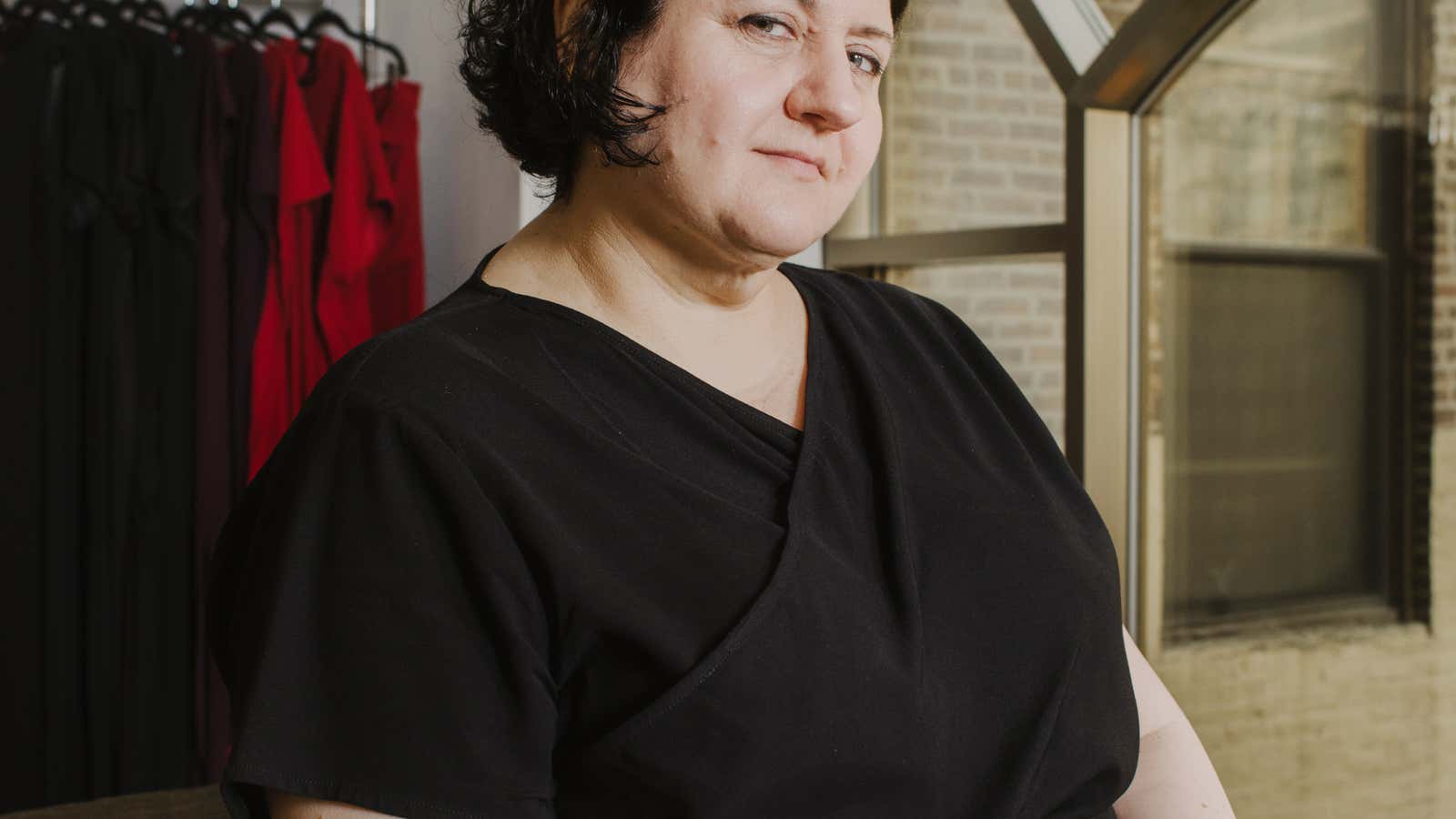Alexandra Waldman, the co-founder and chief creative officer of Universal Standard, started the company out of frustration at not being able to find stylish clothes that fit her as a size-20 woman. In 2015, she and her co-founder, Polina Veksler, put out an eight-piece collection that sold out in a week. Now the company has raised $8.5 million in funding, including investment from the lifestyle guru Gwyneth Paltrow.
This piece, in Waldman’s words as told to Annaliese Griffin, has been edited and condensed.
I don’t have a design background. I was a fashion journalist. So I was in the unique position of sitting in some front rows and looking up at gorgeous things and knowing that I could never participate in the style and in having them. I had a lot of experience with the lack of access to the things that I thought were beautiful.
I was always in a position to pick the best of the worst. And that’s how most people my size got on with it. If you cared, then you got creative, and you improvised with men’s clothing, or you bought things and you cut them. But it was always a frustrating experience. A lot of people think that it’s just a size difference thing. It’s not. The clothes that are designed for bigger women are completely different kinds of clothes, both in terms of style and in terms of quality.
For me it was this trifecta of terribleness. You were either infantilized—you couldn’t buy a t-shirt that didn’t have a kitten or a puppy on it, or some sort of horrible French saying. Or you were hyper-sexualized. Your options were this kind of leopard-print bodystocking. The third branch on that trifecta was the very marmy stuff, fabrics that were the cheapest kind of synthetics to the point where you thought if you walked a little too quickly you might set yourself on fire.
That horrific lack of quality and care highlighted and reiterated this disdain that I felt from the apparel industry as a consumer. I was just not considered.
I really wanted something that was more elevated and more simple—clothing to live in. I couldn’t see myself walking into a bar in Soho for a drink with my friends in yellow palazzo pants. I wanted jeans, I wanted a cool jacket, and I wanted to wear my Adidas sneakers. I wanted to look like I was part of the real world.

A lot of brands, when they think about creating clothes that goes beyond what they’re used to in terms of sizing, what the normal thing to do is, is to change the size 6, or whatever your sample size is, and to use a formula to grade up. Unfortunately, it really doesn’t work very well. So, technically you can tick the box and say look, now we make a much broader range of sizes, but the fact is that’s making a photocopy of a photocopy of a photocopy. By the time you get to that 24—that you say that you’re so proud of making—it doesn’t look anything like the 6. So we started with a pair of Bermuda shorts and by the time you get to the 24 they’re basically culottes, or even worse than that.
We wanted to really pay attention from size to size rather than use a single formula. We started doing something I called micrograding. Between each size we took a look at how it fits the body. We looked at the size of the collar, we looked at the cuffs. We wanted it to look native to that bigger body. We wanted to make sure the dip in waist was still on the waist and not on the hips or just under your bra as you got into the bigger sizes. We wanted to make sure that if it was meant to end at your knees in a size 6, it would end at your knees in a size 26. And in order to do that properly we decided to use the full range of fit models and to take a look from size to size and make adjustments accordingly.
There isn’t a lot of difference between a size 2 and a size 6. There can be a huge difference between a size 16 and size 26 because the topography of the body changes. There’s a lot more differentiation in what curves where, what curves out, what curves in.
There are some very real technical obstacles. There is such a thing as typical width to various bolts of fabric and there’s a lot of wastage if you have to cut length-wise rather than width-wise. Also, you have to consider stretch, because many fabrics have two-way stretch rather than four-way stretch. So when you’re making a size 00, and a size 32, there’s tremendous difference in the amount of fabric that you use. Finding a factory that knows how to do bigger sizes is not as easy as it sounds. It’s a very new field, a new business, and people are learning as they go.
We wanted to create the kind of clothes that straight-sized women wouldn’t think twice about buying because they’re beautiful clothes. They weren’t plus-size clothes, they were just clothes. My main role is to devise the design principles and the aesthetic—what we want to say with Universal Standard and where we want to take it.

I don’t think plus-size clothing has a future. The world doesn’t need another plus-size brand. I think what we need to do is take those two branches, the plus-size and the straight-size, and bind them back together and just start making clothes for women, for everyone. From day one we were size 10 to 28. We’re currently 6 to 32, and by next year we will be 00 to 40.
It’s a joy being able to create things that women in general want and bind these groups together so you don’t have that one person sitting outside the dressing room while her friends are trying stuff on and just accepting the fact that she can’t participate. It’s a very emotional experience. Clothes are important. I think that a lot of people think that it’s fluff but it’s not. It’s the armor we wear out into the world; it’s how we present ourselves. And it’s important to have as much runway as you need to present yourself as you’d like.
When your clothes fit properly and your clothes are well made, and look good, and are part of the real world in terms of aesthetic, it feels good, it changes your day. It changes a lot of things.
